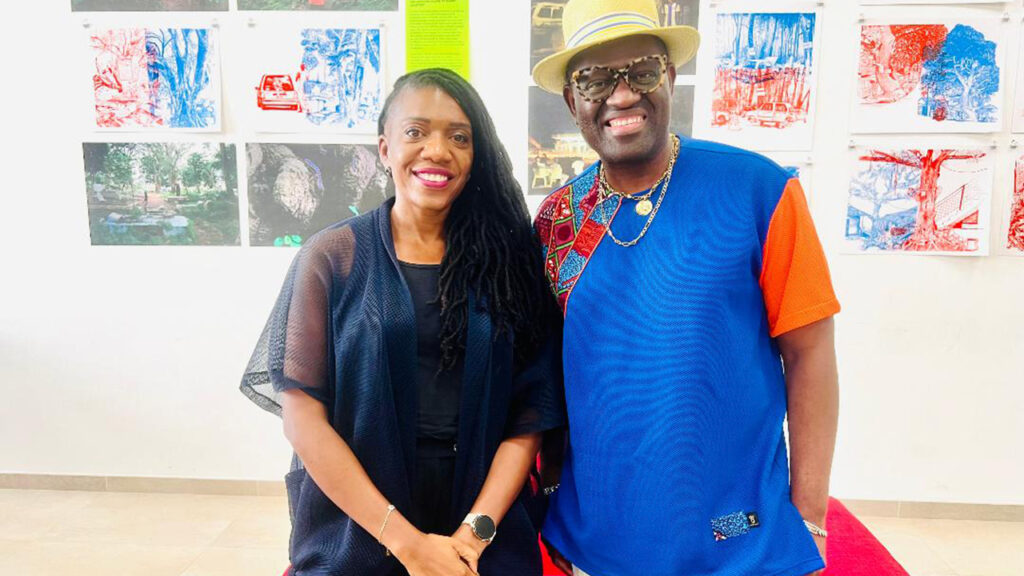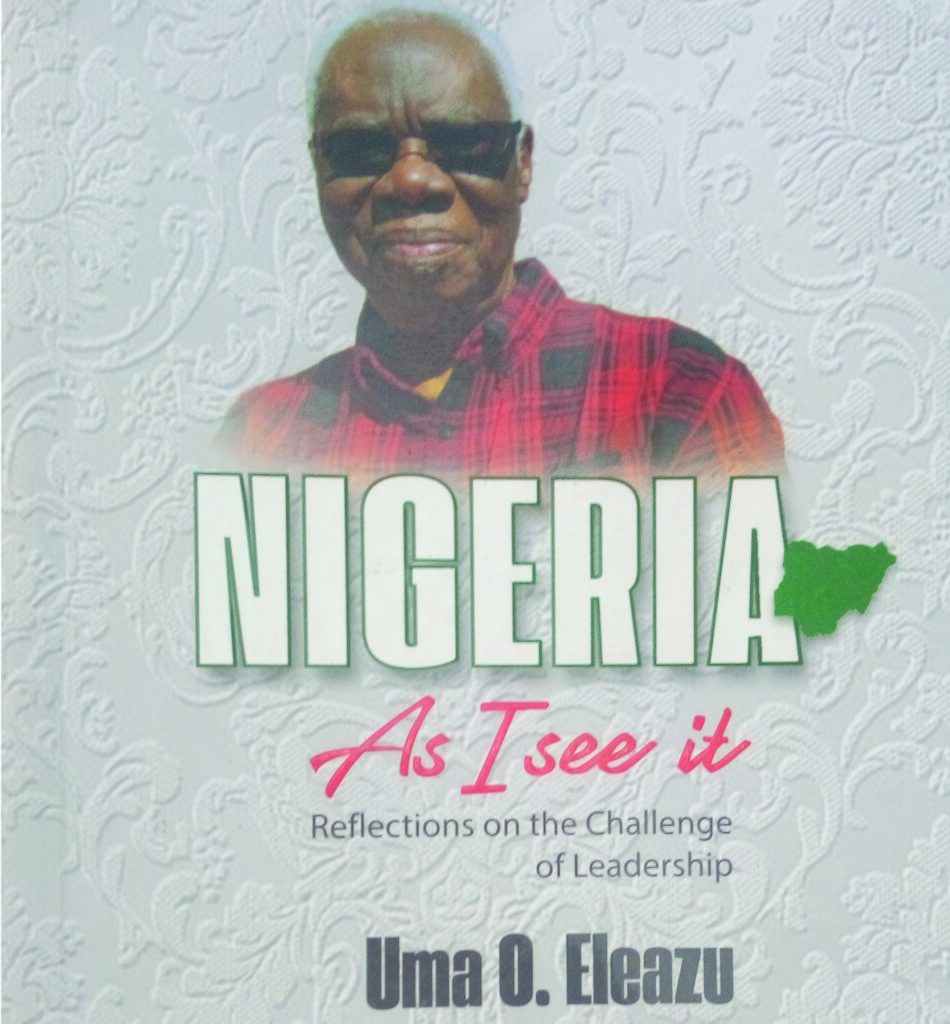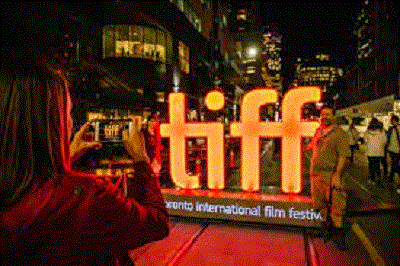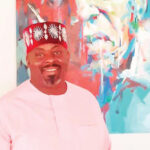 “I want this small boy (pointing to the young Simon, standing before them), to be in ABU (Ahmadu Bello Universit),” Yinka Odulami casually told his close friend and a senior lecturer at the university at the time, Luca Tokan Bentu, who had come visiting, at his modest office, in National Council for Arts and Culture (NCAC), Iganmu, Lagos. The young man who was a junior staff at NCAC, barely betrayed a chuckle. This had been his dream, his ambition. But there was no path to it. And now, he was being offered the opportunity on a platter! He wanted to thank them, nay, shout for joy. His mouth opened but no words came. And then he heard the magic words: “Come and see me at ABU next week,” Bentu said, turning to his friend, Odulami. He knew it was his cue to leave …
“I want this small boy (pointing to the young Simon, standing before them), to be in ABU (Ahmadu Bello Universit),” Yinka Odulami casually told his close friend and a senior lecturer at the university at the time, Luca Tokan Bentu, who had come visiting, at his modest office, in National Council for Arts and Culture (NCAC), Iganmu, Lagos. The young man who was a junior staff at NCAC, barely betrayed a chuckle. This had been his dream, his ambition. But there was no path to it. And now, he was being offered the opportunity on a platter! He wanted to thank them, nay, shout for joy. His mouth opened but no words came. And then he heard the magic words: “Come and see me at ABU next week,” Bentu said, turning to his friend, Odulami. He knew it was his cue to leave …
Precisely one week after, he was in the office of the renowned scholar who later became a professor and one of the most influential artists from the North, Luka Bentu who asked him a few questions before introducing him to another lecturer. Soon after, he got admission to ABU! It did not matter that he was starting at the Pre-Degree level. He studied hard, passed the examination and got direct entry admission into the degree programme in Fine Art. As a rule of thumb, all students must do the general course which included painting, drawing, graphics, ceramics among others. He had problems with some of the courses especially drawing and painting which he confesses — “I was not good at,” before focusing on his course of specialisation, Art History, which he saw as the only way “I can remain in the profession.” From then on, it was a smooth-sail for him, all through to the final examinations. “That was how I became an artist,” he tells me, seated opposite me that Thursday afternoon in his house in Kubwa, a satellite town in Abuja. “I had my first degree in Art History. At least I made a 2:1. So, that encouraged me.”
It was more than an encouragement. It set the tone for him to go all out to conquer the rarified field of Art History. He chose the University of Ibadan (UI), for his MPhil and Master’s in African Art, with Prof. Adepegba “a powerful Art historian” as the attraction. And the desire to expound the frontiers of Art History beyond African Art to European Art, took him to the University of Nigeria, Nsukka (UNN) where he met the charismatic and world-famous Art Historian, Prof. Ola Oloidi for his PhD. “Oloidi advised me to go through Master’s again so that I could get the proper foundation and I did before I could proceed for PhD,” he explains. Unconsciously, in his quest for knowledge, he traversed not only the three foremost universities in Nigeria but the country’s three geo-political zones: North-West, South-West and South-East! It is a no mean feat…
But for Simon Odey Ikpakronyi, it was not always like this. Life had been hard and harsh until he met his benefactor. And it was by chance. After his Primary School education at Gabu, his village in Yala Local Government Area of Cross River State, his parents did not have the means to send him to secondary school. At a very tender age therefore, he moved to the neighbouring town of Okuku to learn a skill in signwriting. For two-and-a-half years, he apprenticed under Anthony Ozoemena popularly known as Whiskey, an indigene of Aguata in Imo State. He learnt the entire gamut of the trade and soon after, started his practice. “I was on my own, moving from school to school, doing school vests, badges, banners, writing plate numbers for motorcycles, cars and things like that,” he recalls. Over time, he saved enough money and was able to enroll in secondary school while plying his trade on the side. Once done with secondary education, the opportunity to further his education was just not there, so he asked his cousin, Emmanuel Ihialo, who lived in Lagos, if he could come over to stay with him to scout for a job. He was obliged. For one year, he applied to different organizations for a job without any luck.
His break came when his cousin’s neighbour, Cherichou, a Northerner and staff at the National Council for Arts and Culture (NCAC), located at the far end on the sprawling ground of the National Theatre, took him to the office and introduced him to Mr. Yinka Odulami, a senior staff with the agency. The interview was brief. A few days later, his appointment letter came from NCAC! Three years down the line, and with Odulami serving as his mentor, the road to further education was thrown open to him, and a lifelong career in the federal civil service…
After his youth service in 1992, Ikpakronyi was absorbed into NCAC courtesy of Mr. Ewie Amienwauu, then Director of Administration, who made him the promise when the agency under Frank Aig-Imoukuede refused to approve his study leave even without pay and he had to resign to face his studies. Now a Visual Art Officer, he was posted to the National Gallery Division then under Mr. Majwi Maidugu, operating from Entrance B of the National Theatre, where works of modern art were stored. Had had his eye on a rewarding career at NCAC as he settled down in his new office. But fate had another plan for him…
By Decree No. 86,1993 promulgated by former Military President, Ibrahim Babangida, the National Gallery of Art (NGA) was established as a parastatal, effectively morphing the National Gallery division hitherto under NCAC, as the nucleus of the new agency. The development did not sit well with the management of NCAC which saw it as an encroachment on its territory and was very reluctant to cede the place. This posed a problem for the newly appointed pioneer Director/Chief Executive, Dr. Paul Chike Dike. “NCAC management did not want to release the place to NGA so Dike was just coming and floating about,” recalls Ikpakronyi who was now caught in a quandary between loyalty to NCAC, his employers, and the new Chief Executive who he had now become fond of. Indeed, he was going around with Dike to the Federal Ministry of Information in Ikoyi, Lagos, seeking ways to resolve the impasse. In one of those visits, they met P.B. Etta, the Permanent Secretary and informed him of the development. Ikpakronyi explained his dilemma as an employee of NCAC to release the key in his custody to the new Chief Executive of NGA. That was when he was advised to hand over the key. “I actually did the handover of the Gallery, formally to Dr. Dike,” he tells me, smiling broadly.
Unwittingly, he incurred the wrath of NCAC which waited in the wings to have their pound of flesh. It did not take long in coming. “That explained why NCAC could not merge my service because at the end of the day when I applied for merging of service from NCAC to NGA, NCAC resisted it. Dr. Dike then asked me to take a new appointment, which I did.” The collateral damage for him was that while he accompanied the chief executive as he head-hunted the foundation staff of NGA, including Abdullahi Muku, A. T. Ibrahim, Titus Akusu among others, he descended to number 12 in the nominal roll. “We worked smoothly. Dr. Dike made me his PA. I worked with him throughout the period he was in NGA. When I became an Assistant Director, I became his SA. I was with him until the last day he left NGA and it was a smooth journey. I was his PA and SA on Professional Matters. In the same manner, he worked closely with two other Directors General: Joe Musa and Abdullahi Muku, who he describes as his colleague and later the current Director General, Ebeten William Ivara.
His career at NGA has oscillated between the departments of Curatorial Services and Research which changed names over the years: Research and Documentation (RD); Research and Education (RE); Research and Publication (RP); Planning, Research and Documentation (PRD) and now Planning and Research (PR)! Two new departments have since emerged from Research: Educational Services and Documentation and Monitoring. “I actually prepared their initial structure and handed over to the directors with staff. That was how they started,” he says. Unsurprisingly, he left his imprints on both professional departments which he headed at different times within NGA and the visual arts community at large. On Curatorial, he has curated and co-curated not less than 63 major art exhibitions (solo and group) both locally and internationally. The exhibitions were usually accompanied by standard brochures with academic write-ups which he copiously contributes to.
But research is his forte and the scanty materials on Nigerian visual arts at the time, fortified his resolve. The solid foundation for the documentation of modern Nigerian art was laid by the pioneer DG, Dike, a thorough bred professional, who was very keen to bridge the knowledge gap matched only by the eagerness of his protégé, Ikpakronyi. “Dr. Dike encouraged me to take up the challenge of researching into the various aspects of modern Nigerian Art and introduced me to Professor Uche Okeke,” he recalls. “And through Uche Okeke, I became familiar with members of the Zaria Art Society (ZAS). My good relationship with most of them made it possible for me to tap from their wealth of knowledge as they always welcomed me any time I reached out to them,” Ikpakronyi says. To his eternal joy, they released tons of relevant materials on Nigerian Art from their archives to him with some of them constantly drawing his attention to publications and developments on the art scene which significantly aided his work in the area of publication. “I have more than 76 articles published while working in the Gallery that would give me more than 10 books,” he says. How was he able to achieve these? I ask. “I don’t rest. At home, in the car, on the aircraft, I am always reading and writing. As soon as I’m done with one, I keep it and I move into another topic…”
And on March 16, 2019, the mantle of leadership fell on Dr. Simon Odey Ikpakronyi as Acting Director General, National Gallery of Art on the heels of the expiration of the tenure of Abdullahi Muku. This did not come to him as a surprise. “Ordinarily, that is how it is supposed to be. You grow in the service and when a Chief Executive exits, the next in line is supposed to take over,” he tells me. It was at a time programmes of NGA were no longer coming up as regularly as before due to issues of release of funds. Even though the gallery account was almost empty at the time, he was determined to bring NGA back to reckoning. For him, programmes are the soul of any government organization. There are no excuses for not executing them on a regular basis. As a foundation staff, he looked back to NGA’s glorious past and was poised to turn the table, money or no money. Hence, he rolled up his sleeves and dared management and staff of NGA to think out of the box and bring back that glory. The result, even to him was astonishing. Back-to-back, NGA was able to execute three major programmes in three weeks with others in quick succession!
But getting an edifice for the National Gallery of Art was his main challenge. He was saddened by the fact that so many art works in the collection of NGA (about 3000), are cramped in an unconducive environment and lack the space to be properly displayed. Many have flaked and are still flaking due to poor storage. “We actually made efforts towards that direction. Oji Onoko [I chuckle] who was the Head of Public Relations in the office that time was very close to me. I took him along and we went all out and got an edifice. We got the Federal Ministry of Finance through a consultant who tried to see how the place would be paid for: A beautiful building with a large compound that we would have used to even build other structures. A wide compound. We were on that before the present Director-General, Ebeten William Ivara was appointed and I handed over everything to him. Where I stopped, all the communication I handed over to him…”
With the appointment of a new substantive Director General, Ikpakronyi returned to his previous position as Director, Planning & Research department. He was there for only five months before his redeployment to Curatorial Services department where he served for about two-and-a-half years. He finally took his bow from the Federal civil service in October 2023, more than three decades down the line. And the Society of Nigerian Artists (SNA) at its last convention, tagged, “CONADEV ABUJA 2023,” bestowed him with the Distinguished Service Award in recognition of his contribution to the development of visual arts in Nigeria. He clocked 60 years on November 20, 2023.
Onoko, Deputy Director, Information Services, National Gallery of Art, is currently working on a book on Nigeria’s full-time studio artists, The Artpreneurs.
So how does he feel at this point? I ask him. “I worked and I’m fulfilled in the NGA. The only thing that I feel bad about is that the NGA was not able to have an edifice before I exited that place. For that, I don’t think there is need for any celebration from my side. I will not celebrate my leaving NGA because that is what all our dreams through these three Directors-General was — to have a Gallery, an edifice where art works can be displayed for people to come and view and appreciate. And because that is not in place, people don’t see the NGA as a viable place, as a place that will add anything to the growth of this country. In western countries, a lot is generated through gallery exhibitions. People queue and pay to view art works. But that is not the case in this country and that is what the initial dream of the NGA was, almost 30 years now. NGA will be 30 years by November/December. And we don’t have an edifice. How will I be happy? I cannot be happy.”
Still, he is poised to make a difference post service far from hanging his boots. He plans therefore to establish an Art Research and Exhibition Centre (AREAC) in Kubwa, Abuja which will focus on Children Art, Women Art and General Art. Besides exhibiting works of art at the Centre on a regular basis, he plans to organize workshops, seminars and lectures on different aspects of modern art on a regular basis. He will equally be classifying his numerous articles, published and unpublished with a view to publishing them into books. But why Kubwa? I ask him. “If you look around, there is no art activity in Kubwa and I have been in Kubwa since we moved from Lagos to Abuja. I have been in Kubwa all through. I want to change the story.”
This is not a dream for Simon Odey Ikpakronyi but a reality as sure as night transmutes to day-time. And for the restless art historian, day is just breaking…













